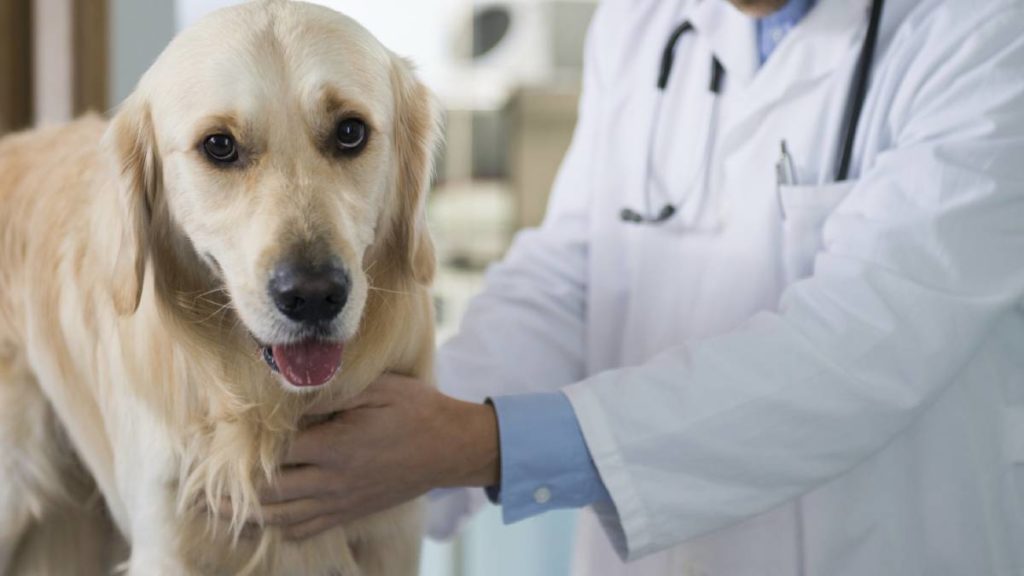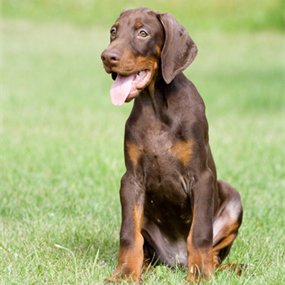Parvo in dogs – symptoms, prevention and cure

What Is Parvo?
Canine parvovirus (CPV) is a highly contagious virus. It causes an infectious gastrointestinal (GI) illness in puppies and young dogs. In simple, Parvo is very similar to pan-leukopenia in cats.
Part of what makes the virus so dangerous is the ease with which it is spread through the canine population. The virus spreads either by direct or indirect contact with an infected dog, or through faeces, and an infected dog can begin shedding the virus four-to-five days after exposure often before the dog starts exhibiting any clinical signs of infection. The dog will continue to shed the virus while he is sick and for up to 10 days after he has recovered. This means that accurate diagnosis and quarantine are essential for the health of your dog and of neighbour dogs, as well.
Signs & Symptoms of Parvo in Dogs
The major symptoms associated with the intestinal form of a canine parvovirus infection include:
- Bloody diarrhea
- Vomiting
- Sudden in-appetence (dog won’t eat)
- Weight loss
- Weakness
- Depression
- Red gums and eyeballs

The intestinal form of CPV affects the body’s ability to absorb nutrients, and an affected animal will quickly become dehydrated and weak from lack of protein and fluid absorption. The wet tissue of the mouth and eyes may become noticeably red, and the heart may beat too rapidly.
When your veterinarian examines your dog’s abdominal area, your dog may respond due to pain or discomfort. Dogs that have contracted CPV may also have a low body temperature (hypothermia), rather than a fever.
Dog breeds that Most at Risk for Parvo attack
The Young dogs possibly between six weeks and six months old with improper vaccination are most risky to contract Parvo. The big breeds like German Shepherd Dogs, Rottweilers, Doberman Pinschers, English Springer Spaniels, and American Staffordshire Terriers have an increased risk of contracting the parvovirus, although the reason is not sure yet.
Puppies are born with antibodies from their mothers. As these antibodies fade, however, it is up to owners to make sure that the puppies receive a course of parvo vaccinations. The stress of weaning and a secondary parasite or infection, along with parvo, can lead to a more severe case of parvo, which is why it is very important to talk to your vet about the proper care for puppies and pregnant bitches.
What Causes Parvo in Dogs?
The canine parvovirus causes parvo in dogs, and it can be transmitted in two ways. The first is by direct contact through the nose and mouth with infected poop, which can happen when a dog sniffs or licks a surface or another dog that has been contaminated with faeces. Since puppies explore their world through smell and love to mouth things, it is easy to see how a curious puppy could contract the parvovirus.
The second method of transmission is through indirect contact. The virus can survive on clothing, equipment, on human skin, and in the environment. Indirect transmission occurs when a puppy comes into contact with a contaminated person, object, or environment. The parvovirus is a particularly resilient virus. It can survive indoors at room temperature for at least two months and is resistant to many commonly used cleaners and disinfectants. Outdoors, the parvovirus can survive for months, and even years, if protected from direct sunlight. This is why hospital quarantine of the infected dog and proper clean-up of the environment are especially important.

Shoes that have come into contact with infected faeces can also bring the virus into a dog’s environment, which is concerning since there is evidence that parvo can live in ground soil for up to one year. If you suspect that you have come into contact with faeces at all, you will need to wash the affected area with household bleach, one of the few disinfectants known to kill the virus.
Once a dog has contracted parvo, the virus replicates. This replication takes place in the small intestines, lymphopoietic tissue (lymph nodes, thymus, etc.), and bone marrow. This leads to severe GI problems and in rare cases, myocarditis (inflammation of the heart).
Parvo Treatment and Cure
Many dogs diagnosed with parvovirus receive the fate of “economic euthanasia” because their guardians cannot afford treatment. Standard parvovirus treatment necessitates round-the-clock veterinary attention, which means hospitalization, which means quite expensive. Without intensive care, an already parvo-infected dog’s chance of survival is slim to none. But if you are ready to spend your time and money intention to save your dog then definitely there are chances for cure. The recovery rate of Parvo is generally about 80% if it is properly treated by an experienced Doctor.
If you suspect that your dog has parvo, he needs immediate veterinary attention. Parvo is a potentially fatal virus that requires intensive care, and the sooner your canine is diagnosed the better. Your Doctor will most likely recommend hospitalizing your dog in an isolation ward, where he will offer supportive care and monitor your dog for secondary infections. Dehydration is the most common cause of death for a dog with parvo, so keeping your dog constantly hydrated will be vital.
Depending on the severity of the case, your Doctor may prescribe a series of medications, including antibiotics to prevent bacterial infections from entering your dog through the damaged walls of his intestines. To make matters worse, parvo also reduces your dog’s ability to fight infection by lowering his white blood cell count. Your Doctor will provide your dog with the supportive fluids, nutrition, and medications that will hopefully save his life, which is why taking your dog to the veterinary clinic is the best thing you can do first for him.
Most puppies that survive the first 3-to-4 days will make a complete recovery, which usually takes around one week. Your Doctor will walk you through the recovery process and tailor a recovery plan best suited to your puppy’s needs.
Parvo Prevention
“Prevention is better than cure” Yes, the quote exactly suits for the disease like Parvo.
Properly administered, vaccines protect most puppies and dogs from parvovirus. But there are cases of vaccinated canines contracting the disease, of course rare. Vaccines for the parvovirus are recommended for all puppies and are usually given in a series of three shots when the pup is between 6-to-8 weeks old, again at 10-to-12 weeks, and at 14-to-16 weeks. A booster shot is administered one year later and every 3 years after that.
Unvaccinated puppies and incompletely vaccinated puppies should not be exposed to unvaccinated dogs or to environments where unvaccinated dogs could have introduced the parvo virus, like dog parks or boarding facilities. While it might be tempting to take your new puppy with you everywhere you go, her health depends on keeping her safe until she is fully vaccinated against this life-threatening disease.
Unvaccinated puppies can be safely socialized with fully-vaccinated adult dogs in safe environments like your home. Most puppy classes require proof of vaccination before you can enrol your puppy. Vaccination reduces the risk of the spread of deadly diseases like parvo, so make sure that you do your research before enrolling your young puppy in a class. Socialization and training are very important for proper development, but it is up to you to make sure your puppy is socialized in a safe environment. A puppy should never be placed in situations such as day-care or training classes until they have completed their vaccines at 14-to-16 weeks of age.
